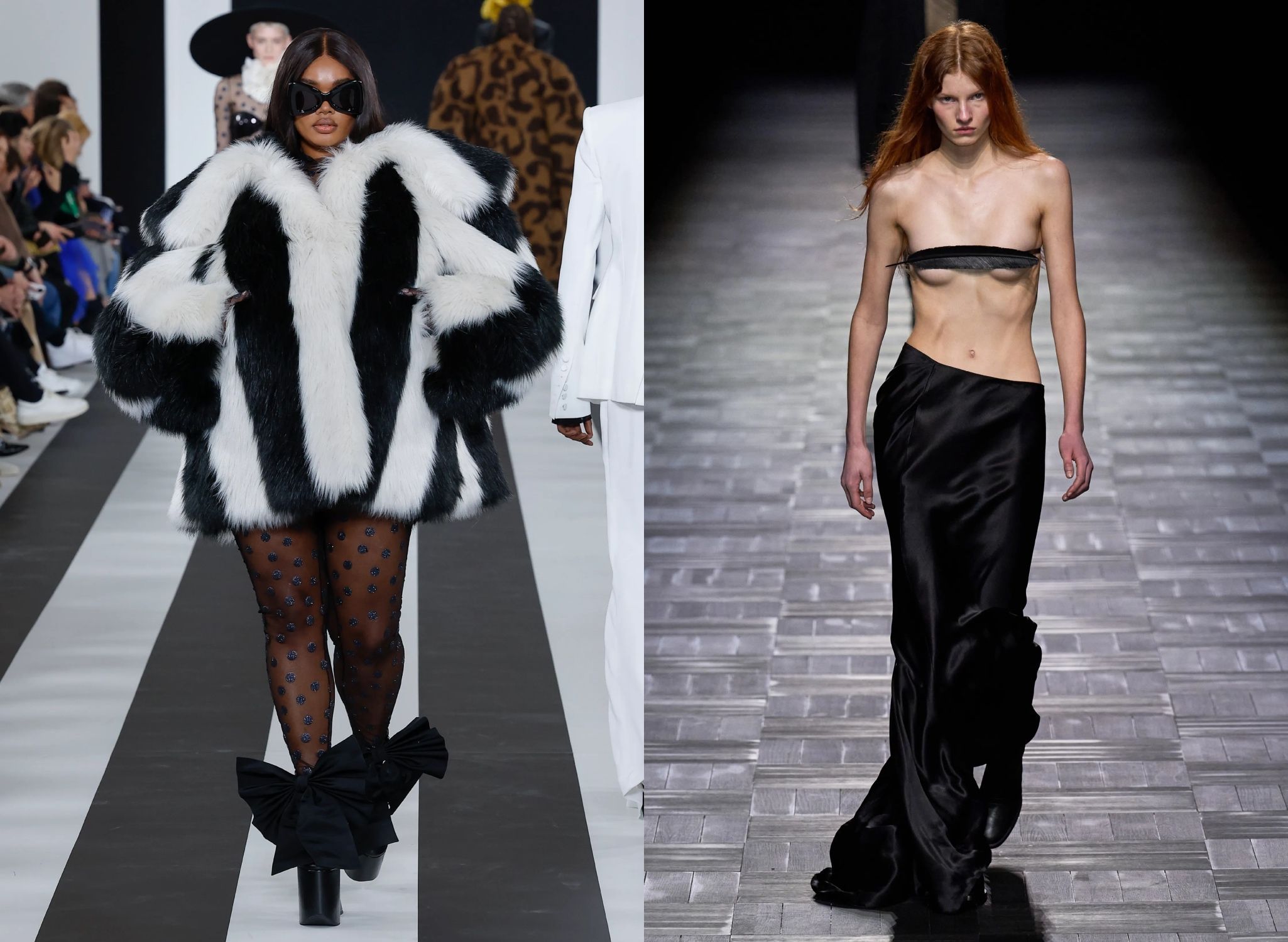
Nina Ricci and Ann Demeulemeester unveiled the visions of their newly installed designers this weekend at Paris Fashion Week. But while both brands tapped young, social media-savvy creators with gender-fluid sensibilities, the missions they face couldn’t be more different.
At Nina Ricci, Spanish fragrance-and-fashion group Puig says it selected Harris Reed to bring a “bold, daring, explosive” new perspective to the small Parisian brand, founded in 1931. If runway and red-carpet buzz manages to lift the image of its perfumes, the brand’s primary sales driver, the project will likely be considered a success whether or not the ready-to-wear ever takes off.
At Ann Demeulemeester, by contrast, it’s all about the clothes: Ludovic de Saint Sernin has been tasked with bringing fresh energy to the fashion collections of a 40-year-old brand, whose founder still looms large with a small-but-loyal following.
Expectations were high for Harris Reed’s debut show for Nina Ricci. The London-based, U.S.-born designer is only 26 years old, but has already been making the case for a more gender-fluid, inclusive aesthetic for years. While still a student at Central Saint Martins, Reed’s flouncy shirts and skin-skimming tailoring helped turn Harry Styles into the most visible proponent of gender-fluid dressing since David Bowie. In 2020, he fashioned a dress for the performer to wear on the cover of U.S. Vogue, pushing non-binary gender expressions further into the mainstream.
Reed’s own line is an artisanal affair, proposing just a small selection of demi-couture designs each season. So supporters of the buzzy change maker were happy to see him get a more stable gig, while followers of Nina Ricci’s journey (Reed is its fifth creative director in 15 years) were intrigued to see how a gender-fluid designer will put a fresh twist on a brand that’s associated with a ladylike, mid-century view of femininity.
On Friday, Reed launched his debut with Precious Lee wearing a polka-dot tulle gown embellished with a gigantic bow, in what appeared to be the first time a plus-sized model had ever opened a Paris luxury brand’s show. The designer said the intention was to “rewrite what femininity looks like in Paris.” With ultra-high platform shoes, big hats and circle skirts, he dialled up the volume on conventionally feminine signatures, celebrating their performative aspect with an approach that invoked drag and ballroom culture.
As a giant lampshade gown negotiated its way past flying saucer-shaped hats on the narrow runway, the event felt at times more like a scene from a campy Netflix series than a real-life Paris show. But even if there’s room for polishing and refinement, the somewhat cartoonish effect wasn’t necessarily a bad thing. As Nina Ricci tries to create space for itself in a crowded market, Reed seems to be focused on delivering bold looks that can light up Instagram and the red carpet.
Owner Puig has little to lose by taking a risk on Reed: none of Ricci’s main fragrances cracked the top 40 scents last year, according to consultancy NPD, in contrast to the group’s top-ranking perfumes for brands such as Paco Rabanne (One Million) and Carolina Herrera (Good Girl).
A few commercial items were mixed into the over-the-top collection — elongated satin suiting, a pair of jeans, a crepe bandeau top, some sunglasses. The company does hope to sell some clothes, too. But whether the looks land on the Oscars red carpet may be a better test of success.
The task at Ann Demeulemeester is in some ways more straight-forward — the brand is all about the clothes. But Ludovic de Saint Sernin’s mission comes with its own challenges.
Ann Demeulemeester, the person, is still deeply revered in fashion over a decade after she stepped away from the industry. But attachment to Demeulemeester, the brand, which recently relocated from Antwerp to Milan under new owner Claudio Antonioli, is less secure.
For De Saint Sernin, imposing too many codes from his namesake label — known for body-baring, crystal-embellished collections aimed mostly at queer boys in sunny climates — would have risked eroding industry support for the Demeulemeester brand. And yet, no matter how faithful the outing, the tribe of loyalists who previously powered the business were unlikely to be happy with anyone but her.
In preparation for his debut, the 32 year-old designer says he pored over Demeulemeester’s archive, wearing dozens of looks himself in an effort to inhabit the brand (like Reed, he is a proponent of gender-fluid dressing).
At Saturday’s show, De Saint Sernin’ ended up turning out mostly on-brand, wearable items to keep retailers and clients engaged: drapey suiting hit the mark, as did trench coats tailored to hit the body just so. Hip-slung mermaid skirts were the best proof of common ground between the pop vision of femininity De Saint Sernin has celebrated in his namesake line and the “Antwerp Six” maison’s famously poetic approach.
But there was a flashier, more head-on energy to the affair than what the founder delivered with her bohemian goth-romanticism. The styling had less droopy layers and much more baring of skin than usual ( the topless models clutching their breasts felt misplaced).
Still, De Saint Sernin’s first outing was mostly about kissing the ring— a savvy move for his debut. Now that he’s shown he understands the history of Ann Demeulemeester, his next steps will likely focus on amplifying its message and rejuvenating its base.


